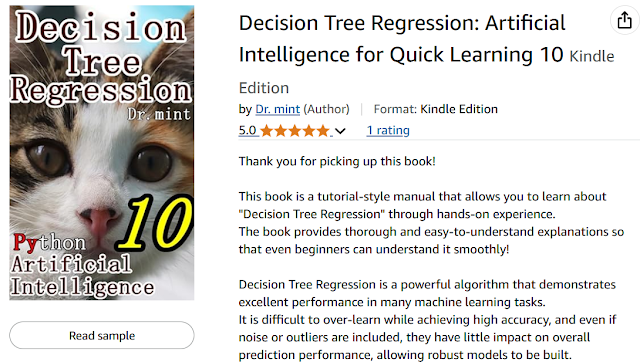In modern data analysis and machine learning, various algorithms are emerging, among which decision tree regression stands out for its simplicity and intuitive splitting process, making it a flexible method applicable to a wide range of problems.
Here, we will explain in detail what decision tree regression is, the situations in which it is used, and the benefits of learning this technique.
1. What is Decision Tree Regression?
Decision tree regression is a technique that applies the mechanism of decision trees to problems aiming to predict continuous values.
Decision tree regression divides given data based on multiple conditions, ultimately calculating continuous predicted values in each subdivided region (leaf node). Each split is determined according to a criterion that minimizes data variance (e.g., minimizing variance), resulting in increasingly homogeneous data groups with each split.
Decision tree regression excels in its ability to capture non-linear relationships and naturally represents data characteristics without being bound by specific preconditions. Furthermore, the visual clarity of how data is split and which factors influence predictions makes interpreting the results easy.
2. In What Scenarios is it Used?
Due to its intuitive splitting process and flexibility, decision tree regression is applied to solve various real-world problems. Here are some specific examples.
- Real Estate Price Prediction
The price of houses and land is influenced by multiple factors such as area, location, age, and nearby facilities. Decision tree regression divides data according to these factors and estimates the average price in each leaf node, achieving a more realistic price prediction.
- Environmental Modeling and Weather Prediction
Climate data and environmental indicators often have diverse and non-linear relationships. Decision tree regression can be adopted as a weather data prediction model, visually demonstrating complex interactions.
- Demand Forecasting in Marketing
The demand for products and services is influenced by many factors, including consumer behaviour, seasonality, and promotions. Decision tree regression, which analyzes data by categorizing it based on conditions, is used as a prediction model that helps optimize sales strategies and inventory management.
- Business Decision Support
In management analysis and performance evaluation, when predicting future sales or costs based on multiple economic indicators, decision tree regression is valued for its flexible modelling capability.
3. What are the Benefits of Learning It?
The benefits of learning decision tree regression extend beyond simply acquiring a prediction technique; it deepens your understanding of data analysis.
- Intuitive Interpretation and Explanatory Power
Because the splitting criteria and decision-making process at each node are visualised as a tree structure, it is easy to explain which variables have what influence. This is extremely useful in business settings and research for communicating analytical results clearly.
- Ability to Handle Non-Linear Problems
Decision tree regression can capture complex patterns and non-linear relationships that are difficult to capture with linear regression by subdividing the data. This flexibility is effective in addressing the diverse problems encountered in practice.
- Rapid Prototyping
Because data set pre-processing and parameter tuning are relatively easy, model construction and validation are possible in a short period. This promotes rapid decision-making and the creation of feedback loops in the field.
- Practical Model Building Skills
Decision tree regression is positioned as a foundation of machine learning, and serves as a stepping stone to ensemble learning (random forests and boosting). By working through actual coding, you can deepen your understanding of the algorithm and dramatically expand your application possibilities in the data science field.
Summary
Decision tree regression is a regression technique with the appeal of flexibility in capturing complex non-linear relationships and intuitive visualisation. It is actually used in various fields such as real estate price prediction, environmental data modelling, and marketing strategy formulation, and its effectiveness has been proven in many areas. Furthermore, learning decision tree regression deepens your overall understanding of data analysis, allows you to acquire practical skills, and serves as a bridge to advanced machine learning techniques.
As a next step, we recommend actually implementing a decision tree regression model. The combination of practice and theory will further expand your data science knowledge and be of great help in solving problems in various fields.
For those of you who want to learn decision tree regression, we recommend this book (access here).

コメント
コメントを投稿